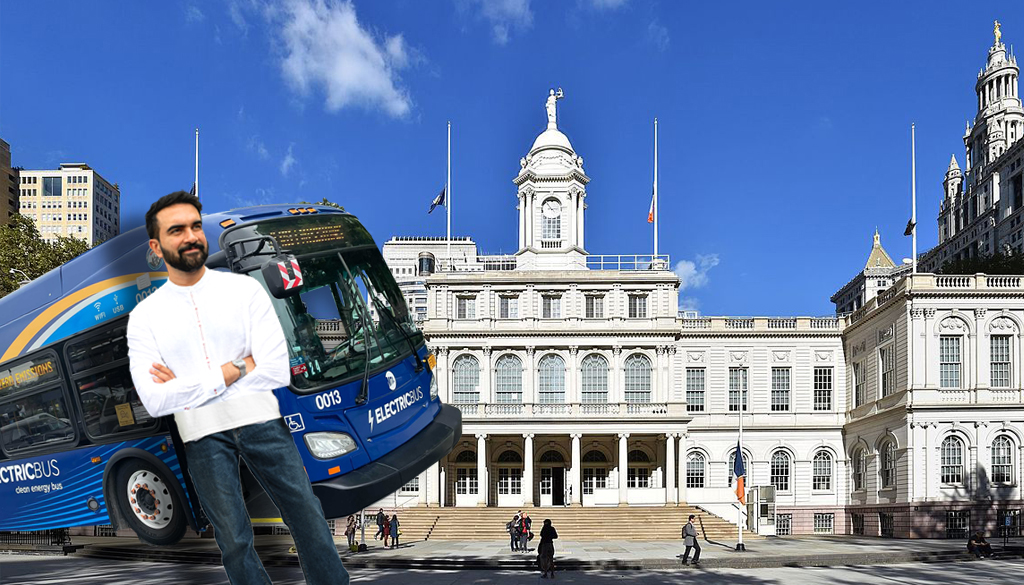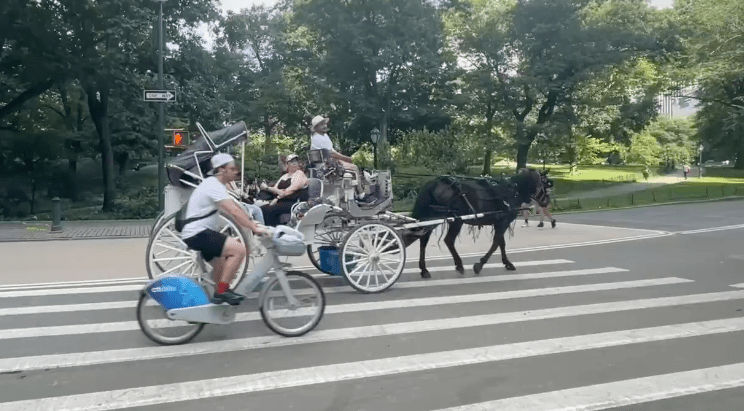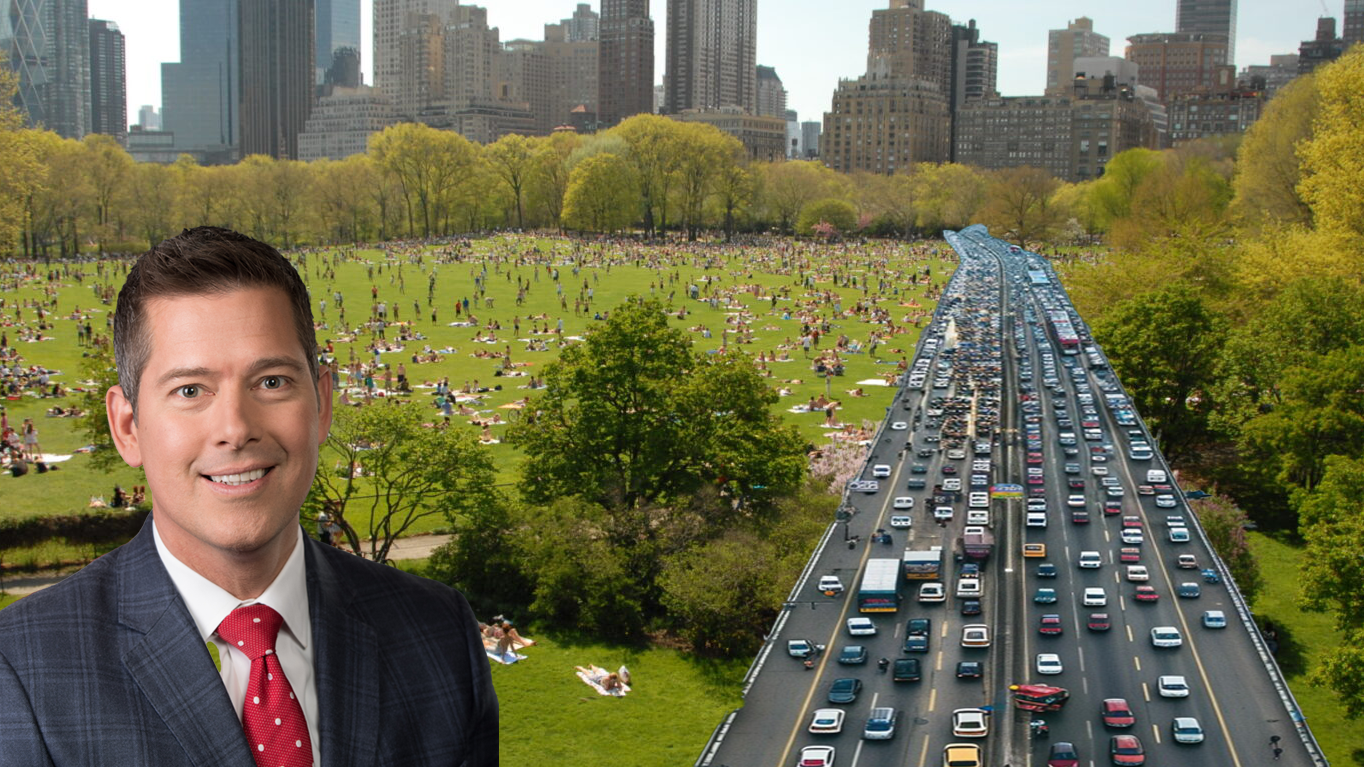 A photosim of the East Houston Street plan; existing condition shown inset. Image: DCP.
A photosim of the East Houston Street plan; existing condition shown inset. Image: DCP.The reconstruction of East Houston Street will include wider medians, bigger sidewalks, fewer traffic lanes, and a new bike lane. But instead of installing a physically protected path for cyclists, the city plans to paint a buffered, Class 2 lane. The project, which received funds freed up by stimulus spending, will go out to bid this summer.
Up-to-date plans of the new street geometry were not available as of this writing, but the design is based largely on the Department of City Planning's East Houston Street Pedestrian Project, finalized in 2006. A spokesman for the Department of Design and Construction said the project would incorporate many, but not all, of the recommendations in that report [PDF].
There's a lot to like in the 2006 plan, including two big pedestrian areas where Houston angles across the regular grid of Manhattan at Avenue A and Avenue D. Based on recent descriptions, the final project will incorporate those two plazas. Street space would also be reclaimed with wider medians, pedestrian refuges, and sidewalk neckdowns to shorten crossing distances. But will the new East Houston feel safe for cyclists?
Currently, 70 percent of drivers on East Houston Street speed, according to studies conducted by Transportation Alternatives.
"It's hard to imagine that paint will offer the kind of protection
mainstream New Yorkers will need to feel safe biking on this crucial,
yet dangerous corridor," said TA's Wiley Norvell. "The city has innovative physically-protected
designs on hand, and to not use them on Houston would be a huge missed
opportunity."
In response, DOT emphasized the project's pedestrian improvements. DOT considers protected bike paths less-than-ideal for typical two-way streets, and the agency expects the removal of two traffic lanes to reduce vehicle speeds.
Even if traffic calms somewhat, the buffered lane will invite the same double-parking that plagues other Class 2 lanes. People choose to bike based on their perceptions of safety, and a buffer can only shift perceptions so far.
"Houston is by no means a typical two way street," said Norvell. "It is exactly the type
of wide arterial roadway that calls for a physically separated lane.
This city's bike network will continue to remain unusable for the average
New Yorker until streets like Houston are provided with the protected
lanes they require to be safe."





